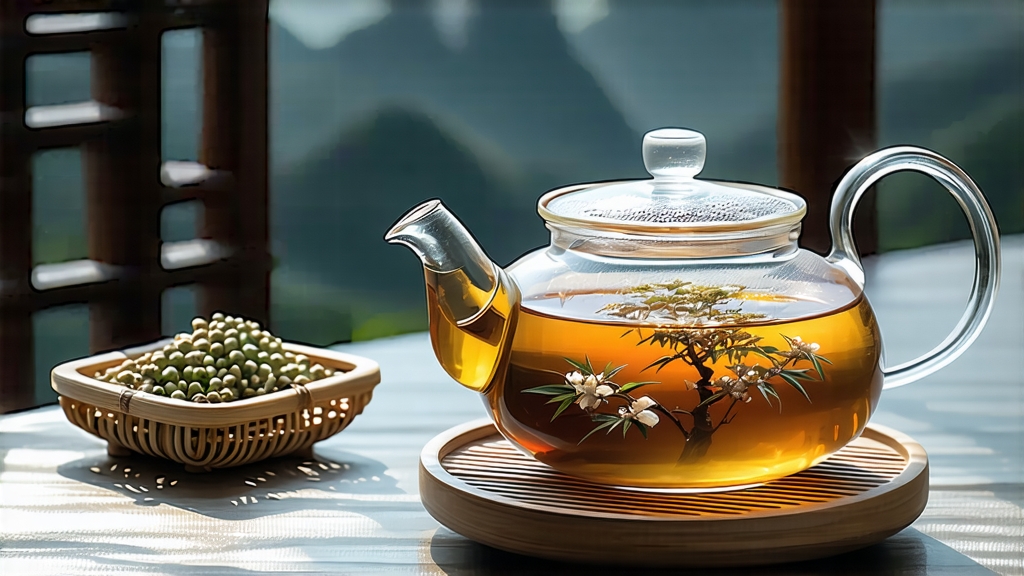
Bai Hao Yin Zhen—“Silver Needle” in the West—has long been the quiet star of China’s white-tea galaxy. Unlike the roasted drama of Longjing or the fermented depth of Pu-er, this tea whispers. Its story begins in the coastal mountains of northeast Fujian, where the Min River bends toward the East China Sea and the white haze of early spring looks almost like steam rising from the earth itself. Local legend claims that a tea maiden once pricked her finger while plucking the first bud of the year; the drop of blood vanished into the downy tip, turning it into “silver” and gifting the leaf with a life-giving sweetness. Historians are less romantic: during the Song dynasty (960-1279) the imperial court demanded “tribute teas” pressed into cakes; only in the late Ming, when loose-leaf fashion swept China, did farmers begin to sun-dry the individual buds. Whatever the origin, by the Qing era Fuding county was shipping crates labeled “Yin Zhen” down the Tea Road to Canton, and European ports soon spoke of a “white down” that brewed like liquid moonlight.
Botanically, the tea belongs to the Da Bai (Large White) cultivar, a genetic giant whose buds can reach 3.5 cm and swell with amino acids, especially L-theanine, responsible for the cultivar’s signature brothy sweetness. Two micro-zones argue over authenticity: Fuding, with its granitic soils and maritime fogs, and Zhenghe, slightly inland, where cooler nights lengthen the withering cycle. Purists side with Fuding for fragrance, yet Zhenghe buds carry more weight on the tongue. Between them lies a silent rivalry measured in millimeters of down and hours of sunshine.
The crafting of Silver Needle is disarmingly simple on paper, maddeningly difficult in practice. Picking opens on the first warm morning after the Qingming festival, when the bud stands unopened and exactly 2.5–3 cm long. Rules are strict: no leaf, no rain, no fingernails. Workers wear cotton gloves, dropping the buds into bamboo creels lined with mosquito netting so the trichomes stay intact. Within two hours the harvest must reach the withering loft—an attic of latticed bamboo trays set 2 m above the ground. Here the buds rest for 36–48 hours while mountain wind and diffused sunlight coax the moisture from 75 % to 8 %. The master’s art lies in reading the air: if the breeze is too brisk, the bud’s enzymes never awaken; if the loft overheats, the down yellows and the cup will taste of cooked pumpkin. Every two hours the trays are rotated like slow-motion roulette wheels; at dusk the windows are shuttered to trap the day’s warmth, then reopened at 3 a.m. when dew point drops. No machine can mimic this dialogue between leaf and sky. Once the buds feel like dried silk—cool, light, yet resilient—they are given a final 15-minute “sunbath” at 9 a.m., then boxed in kraft paper lined with mulberry leaves that repel insects without perfume. No rolling, no pan-fire, no charcoal bake: just withdrawal from water, a minimalist’s triumph.
Western tea science has confirmed what Fujian grandmothers always knew. Because oxidation is arrested by dehydration rather than heat, Silver Needle retains a higher ratio of simple catechins to their gallated forms, yielding a liquor that is pale, low in tannin, yet rich in methylated flavonoids that manifest as orchid aroma and honeyed finish. The same down that gives the bud its silvery shimmer is a storehouse of lipids that volatilize at 80 °C, releasing lactones reminiscent of coconut water. Meanwhile the high theanine/low catechin ratio nudges brainwaves toward alpha rhythm—alert calm, the meditative buzz poets attribute to “drinking clouds.”
To brew Silver Needle without bruising its ego, begin with water you would happily give a goldfish: neutral pH, 6–7 grains hardness, filtered but not distilled. Heat to 80 °C—no hotter—then wait thirty seconds; the kettle’s residual heat will do the rest. Use a tall glass or a gaiwan of 120 ml; weight 3 g of buds, about two he